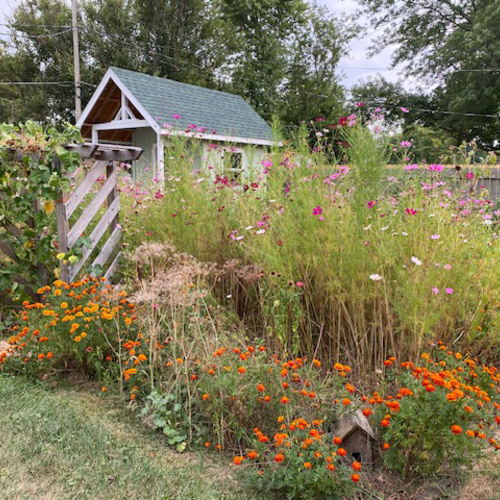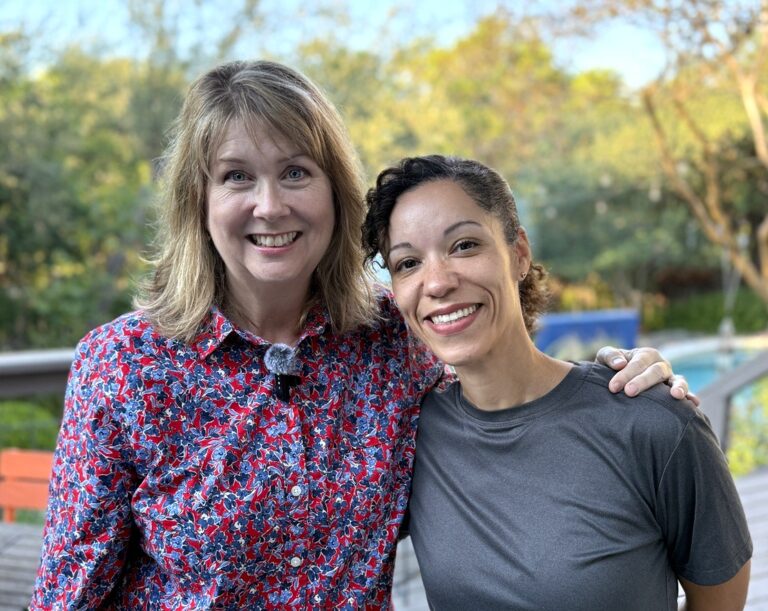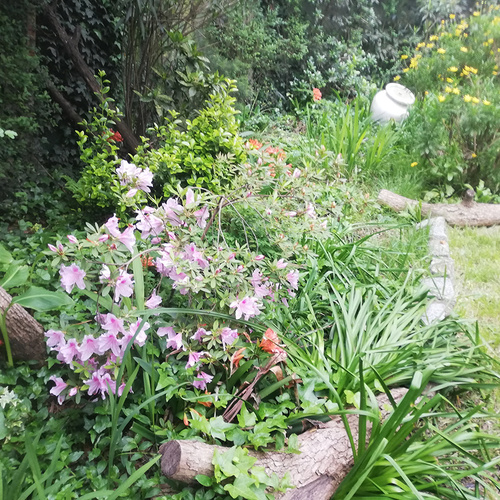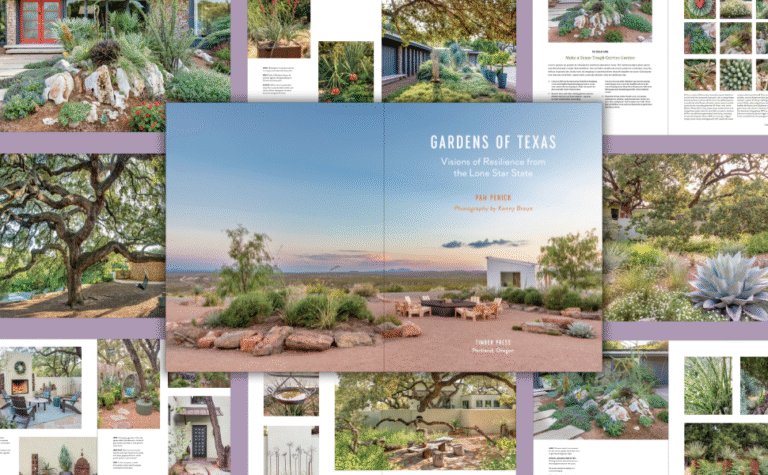Happy Friday, GPODers!
We’re ending the week in Northwest Indiana as we explore Rita Kirkendall’s gorgeous garden for the first time. Rita has planted up a dynamic landscape with lots of color and plenty of benefits for pollinators and wildlife—from a vibrant and bountiful array of annual blooms that pollinators adore, to a range of native plants that help support a host of local insects, birds, and small mammals. While it may seem like a tremendous feat to achieve this level of beauty and environmental benefit, the powerhouse team of Rita and her husband make it all look easy.
I’m Rita Kirkendall, gardening 34 years on a ¼-acre suburban lot in Northwest Indiana. I do the dreaming; my husband, John, does the building and tilling; then I do the planting and weeding. I tend to let Mother Nature lead the way—she has better ideas than I do. We are rewarded with a constant stream of color and beauty from the plants and all the critters they support.
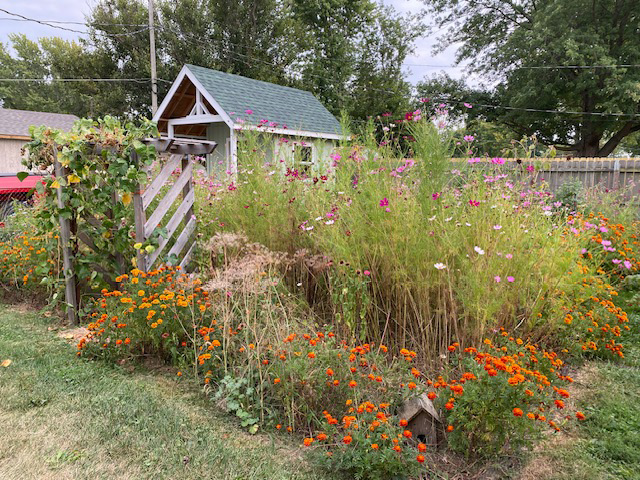 Pollinator paradise: Here’s my vegetable garden, bordered in marigolds with half of it given over to zinnias, cosmos, dill, and borage (Borago officinalis, annual). That’s my dream potting shed, which hubby built for me, in the background. Its front porch provides a lovely spot to be mesmerized by all the activity.
Pollinator paradise: Here’s my vegetable garden, bordered in marigolds with half of it given over to zinnias, cosmos, dill, and borage (Borago officinalis, annual). That’s my dream potting shed, which hubby built for me, in the background. Its front porch provides a lovely spot to be mesmerized by all the activity.
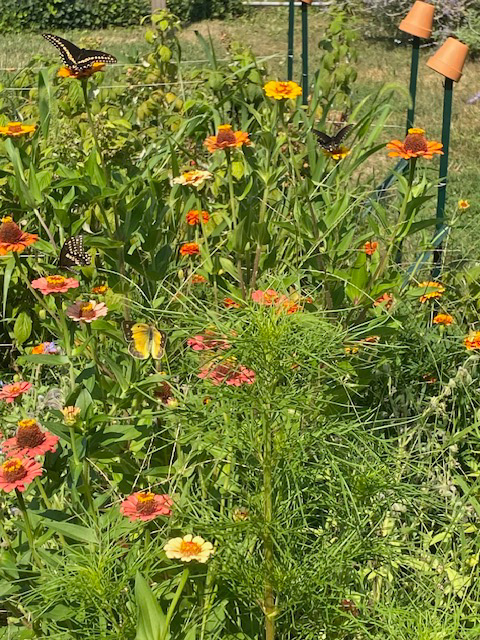 Zinnia and butterflies: The butterflies and bees drawn by all those bloomers feed my eyes and heart as much as the veggies they pollinate feed our bellies.
Zinnia and butterflies: The butterflies and bees drawn by all those bloomers feed my eyes and heart as much as the veggies they pollinate feed our bellies.
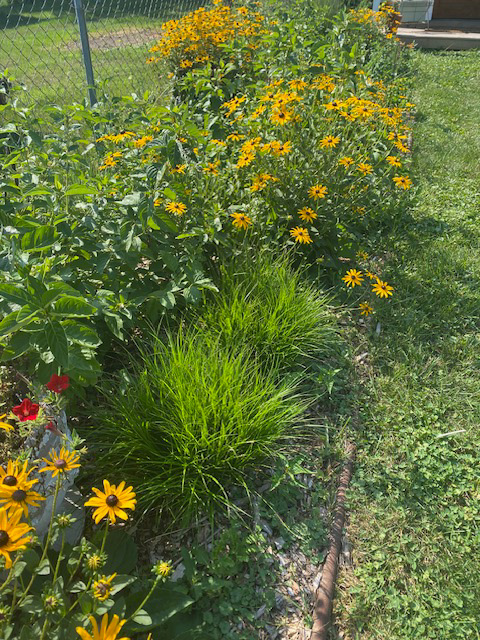 Reading Doug Tallamy convinced me that organic gardening was not enough, and I began adding natives. This bed is just 2 years old, and the payoff has been astounding.
Reading Doug Tallamy convinced me that organic gardening was not enough, and I began adding natives. This bed is just 2 years old, and the payoff has been astounding.
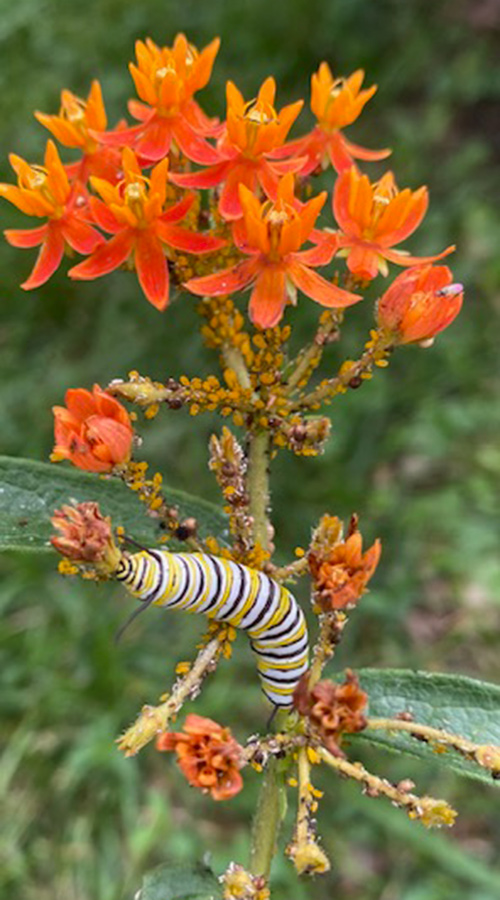 What a thrill to find this monarch caterpillar munching on butterfly weed (Asclepias tuberosa, Zones 3–9). Double the beauty! I’m seeing so many more caterpillars and butterflies these days.
What a thrill to find this monarch caterpillar munching on butterfly weed (Asclepias tuberosa, Zones 3–9). Double the beauty! I’m seeing so many more caterpillars and butterflies these days.
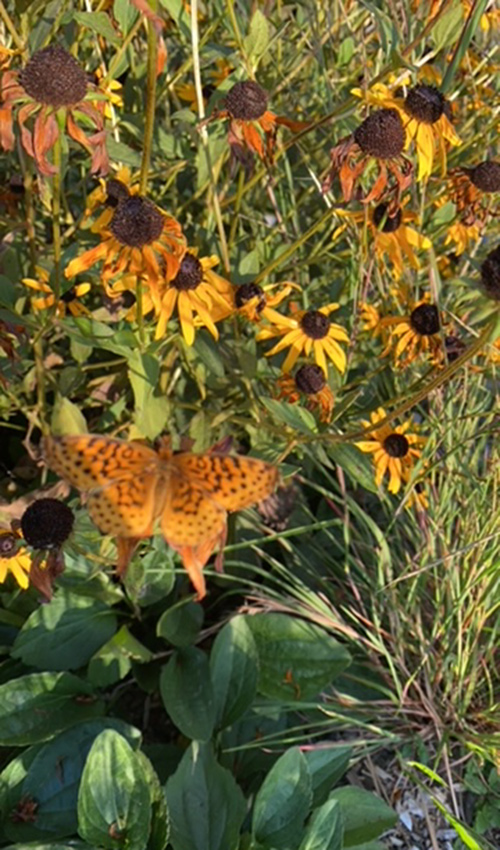 Camouflage: This guy blends perfectly with the fading black-eyed Susans (Rudbeckia hirta, Zones 3–7). Mother Nature really knows what she’s doing.
Camouflage: This guy blends perfectly with the fading black-eyed Susans (Rudbeckia hirta, Zones 3–7). Mother Nature really knows what she’s doing.
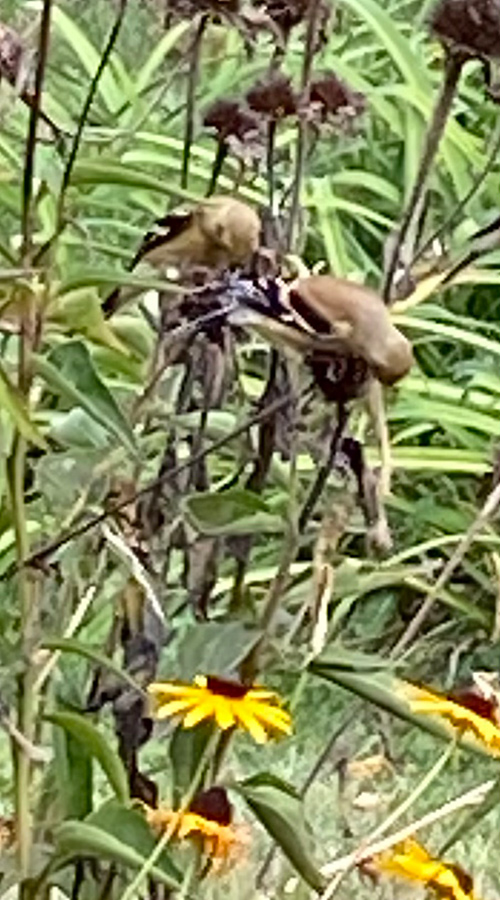 Finch feast: Spent coneflowers provide a bounty for the finches. Messy to some, but we marvel at these cuties just feet away from our deck chairs.
Finch feast: Spent coneflowers provide a bounty for the finches. Messy to some, but we marvel at these cuties just feet away from our deck chairs.
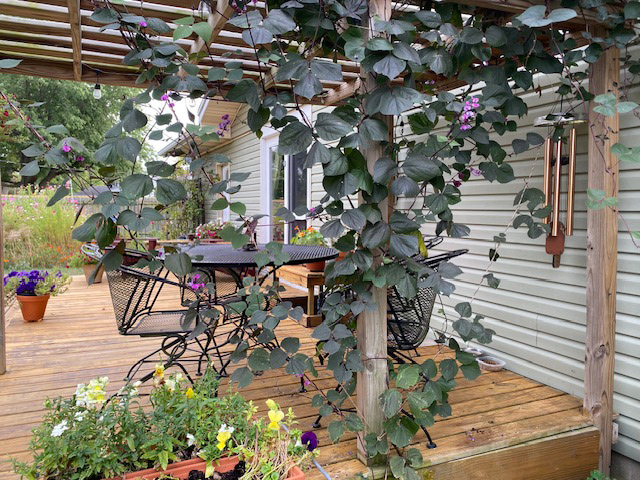 Observation deck: This is where we spend so much time enjoying it all. Hubby built the deck too. Purple hyacinth bean (Lablab purpureus, Zones 10–11 or as an annual) provides a light screen that brings in the hummingbirds.
Observation deck: This is where we spend so much time enjoying it all. Hubby built the deck too. Purple hyacinth bean (Lablab purpureus, Zones 10–11 or as an annual) provides a light screen that brings in the hummingbirds.
Thank you so much for sharing your stunning garden with us for the first time, Rita! The way you and your husband have crafted a landscape for mutual human and wildlife benefit is admirable and enviable. I sincerely hope we get to see more photos from your garden in the future.
Reminder to all readers that we’re always looking for new gardens to feature on the blog. All experience levels accepted, gardens large and small are equally appreciated, and feel free to get creative with your photography. Follow the directions below to submit photos via email, or send me a DM on Instagram: @agirlherdogandtheroad.
We want to see YOUR garden!
Have photos to share? We’d love to see your garden, a particular collection of plants you love, or a wonderful garden you had the chance to visit!
To submit, send 5–10 photos to [email protected] along with some information about the plants in the pictures and where you took the photos. We’d love to hear where you are located, how long you’ve been gardening, successes you are proud of, failures you learned from, hopes for the future, favorite plants, or funny stories from your garden.
Have a mobile phone? Tag your photos on Facebook, Instagram, or Twitter with #FineGardening!
Do you receive the GPOD by email yet? Sign up here
Fine Gardening Recommended Products

isYoung Birdlook® Smart Bird Feeder with Camera
Fine Gardening receives a commission for items purchased through links on this site, including Amazon Associates and other affiliate advertising programs.
Upgraded Dual Granary Bird Feeder. G11 Smart Bird Feeder with Camera – The upgraded dual granary design allows for separate food dispensing, giving birds the freedom to choose while preserving the food’s original taste. With a 2L extra-large capacity, it reduces the need for frequent refills. The drainage design ensures the food stays dry and prevents spoilage from rain. Ideal as a camera bird feeder for birdwatching enthusiasts. 2K HD Camera & Close-Up Bird Watching. Experience clear bird watching with the G11 smart bird feeder. This bird feeder with camera features a 170-degree wide-angle lens and a 1296P HD camera, ensuring vibrant images and videos. With AI-powered recognition, it can identify over 16,000 bird species (subscription required, first month free) and provides extensive birding knowledge. Its unique design helps attract more birds to your backyard. App Alerts & Super Night Vision. The smart bird feeder camera detects motion within 0.5 seconds and sends instant notifications through the “VicoHome” app. With a 2.4G Wi-Fi connection, you can view real-time updates on bird activity right from your app. The video bird feeder also features night vision, ensuring vibrant images and videos even in low light conditions. Ideal for wild bird feeders, this advanced functionality enhances your bird-watching experience day and night.
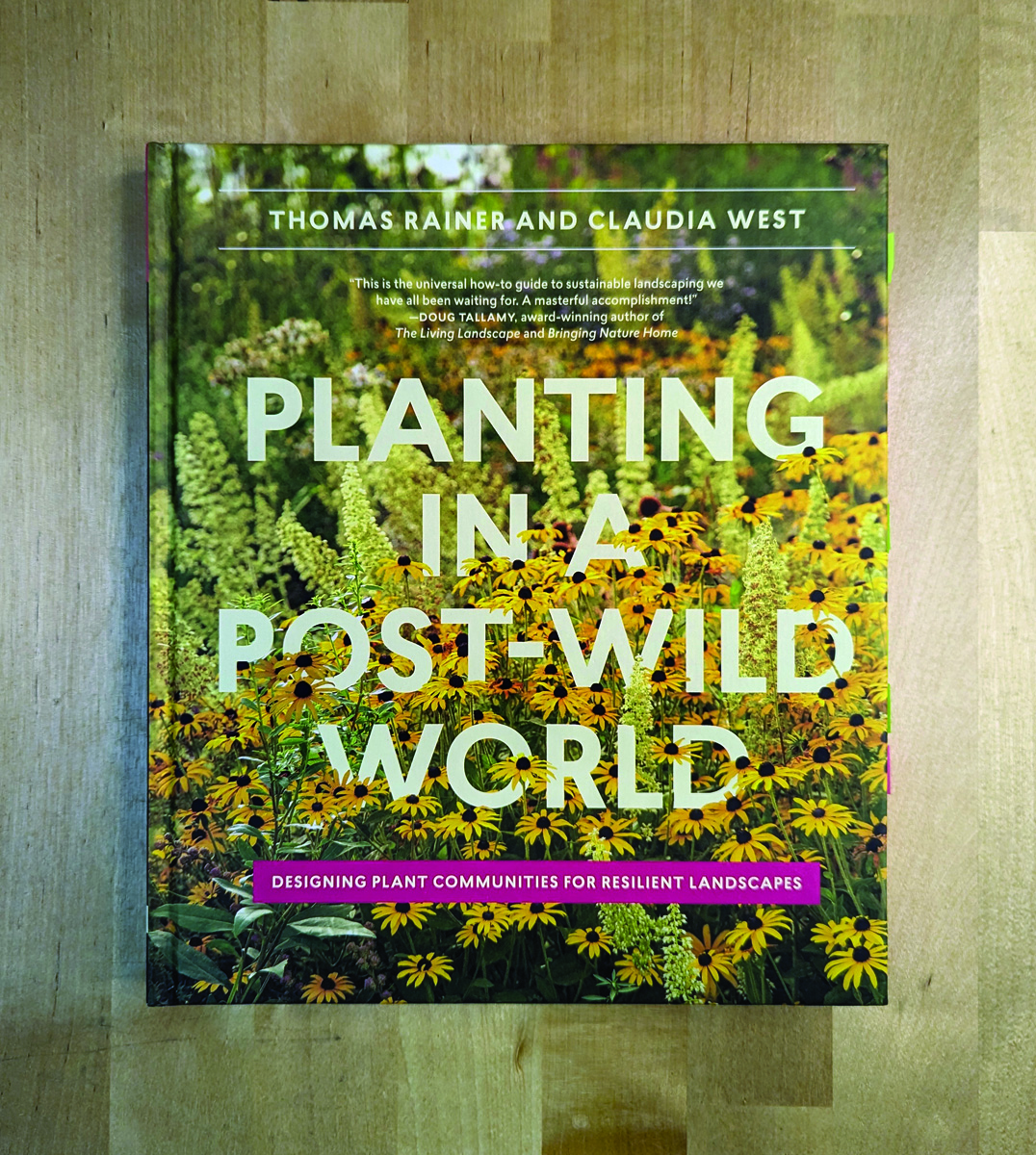
Planting in a Post-Wild World: Designing Plant Communities for Resilient Landscapes
Fine Gardening receives a commission for items purchased through links on this site, including Amazon Associates and other affiliate advertising programs.
Featuring gorgeous photography and advice for landscapers, Planting in a Post-Wild World by Thomas Rainer and Claudia West is dedicated to the idea of a new nature—a hybrid of both the wild and the cultivated—that can nourish in our cities and suburbs.
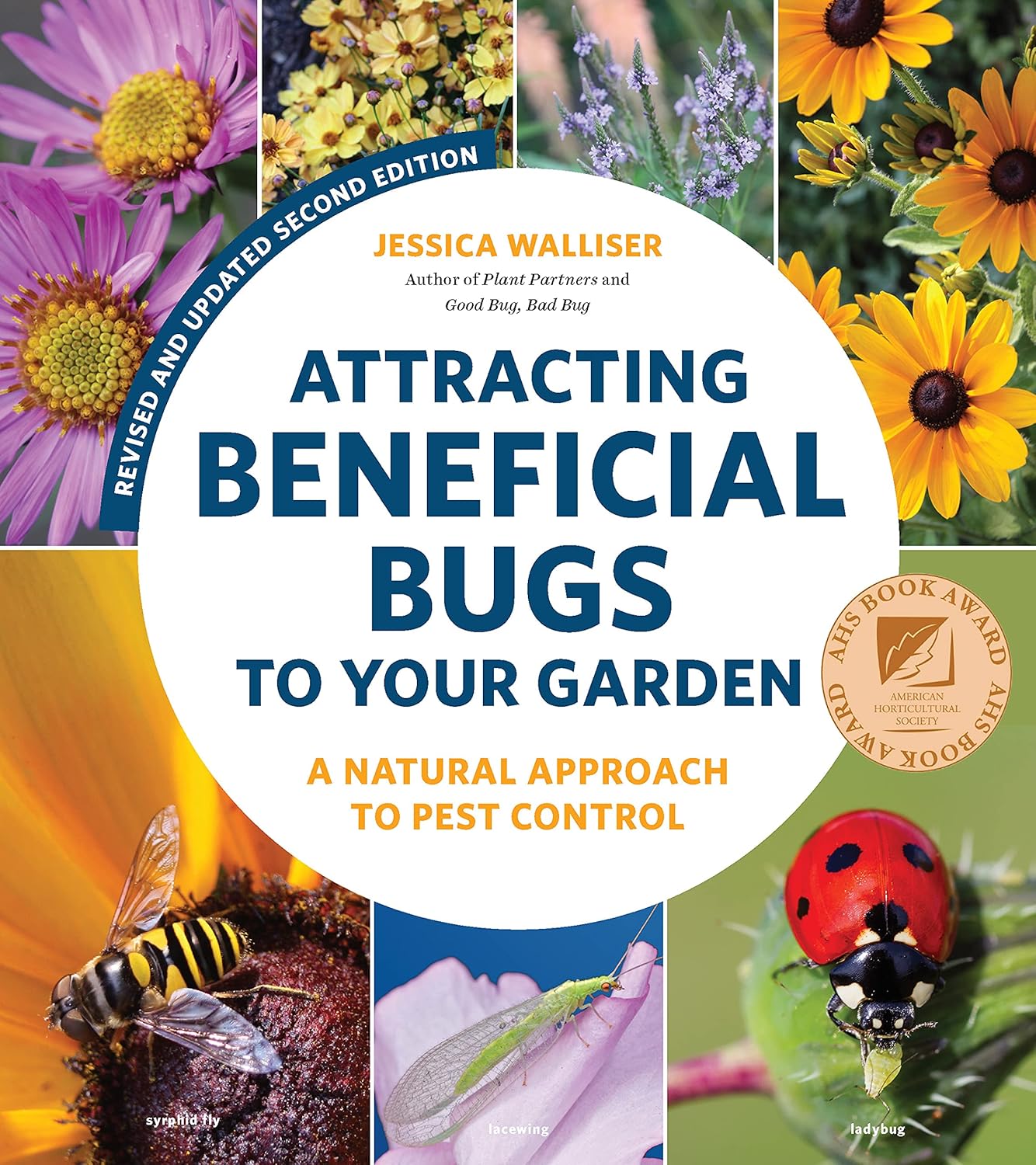
Attracting Beneficial Bugs to Your Garden, Revised and Updated Second Edition: A Natural Approach to Pest Control
Fine Gardening receives a commission for items purchased through links on this site, including Amazon Associates and other affiliate advertising programs.
This revised and updated edition of Jessica Walliser’s award-winning Attracting Beneficial Bugs to Your Garden offers a valuable and science-backed plan for bringing balance back to the garden. With this indispensable gardening reference—now updated with new research, insights, and voices—learn how to create a healthy, balanced, and diverse garden capable of supporting a hard-working crew of beneficial pest-eating insects and eliminate the need for synthetic chemical pesticides.




